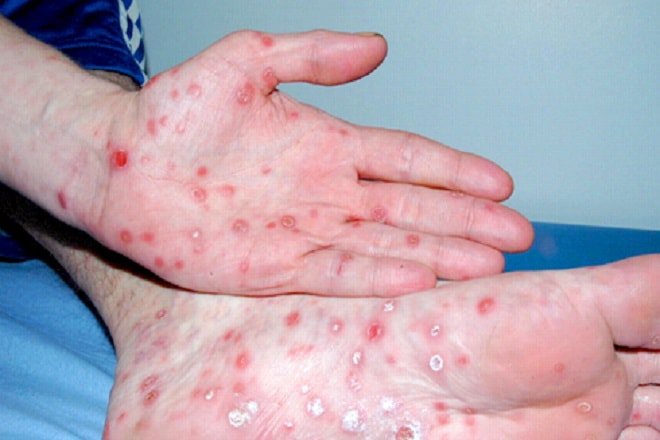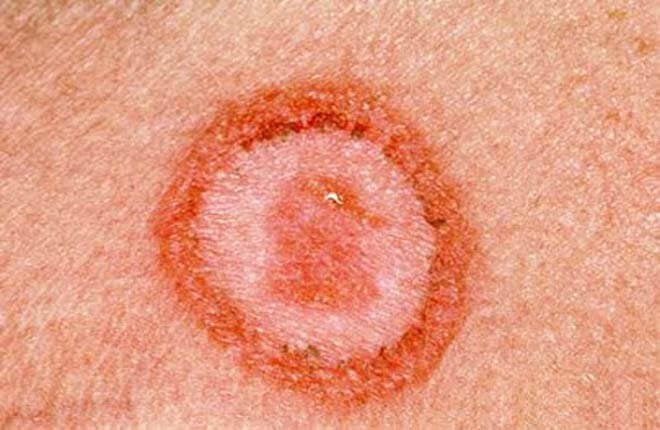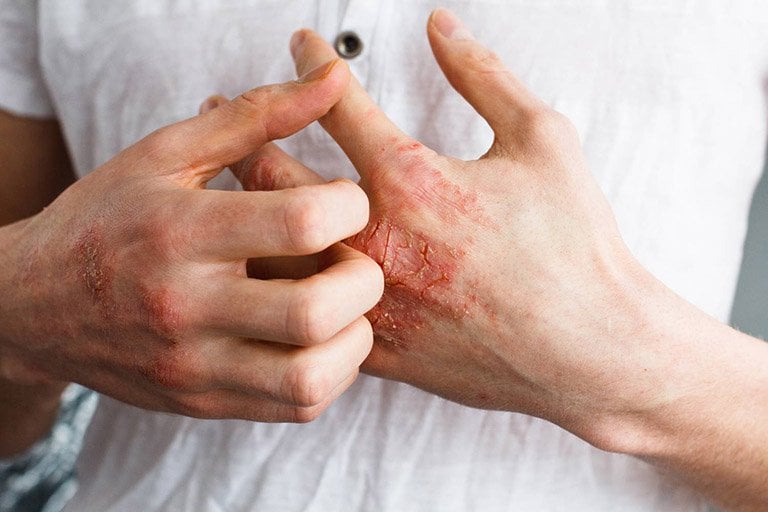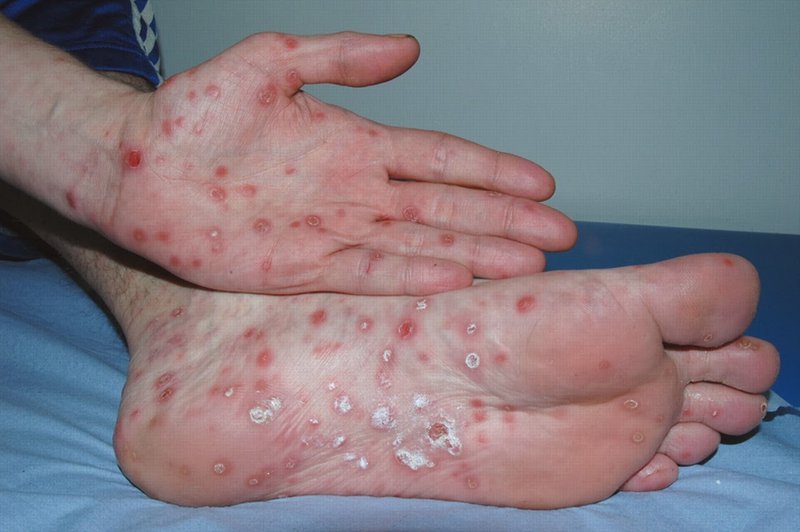Pictures of syphilis by stages
This is an automatically translated article.
Syphilis is an infectious disease that is easily spread through sexual activity, including oral and anal sex. Patients often do not know that they are infected and transmit the disease to their partners. If left untreated, syphilis can lead to serious health problems such as arthritis, brain damage, and blindness.
1. Causes of syphilis
Syphilis is caused by the bacterium Treponema pallidum. You can get syphilis through direct contact with the bacterium Treponema pallidum at the sores of syphilis during vaginal, anal, or oral sex. You may see sores on or around the penis, vagina, anus, or in the rectum, on the lips, or in the mouth. Syphilis can be passed from mother to baby during pregnancy.
Syphilis is not spread to others through sitting on toilet seats, doorknobs, swimming pools, hot tubs, bathtubs, sharing clothes or eating utensils.

Giang mai có thể truyền nhiễm từ mẹ sang con
2. Symptoms through the stages of syphilis
Syphilis is divided into 4 stages (first, second, latent and third), with different signs and symptoms for each stage.
The first stage
During the first stage of syphilis, the patient may see one or more syphilis chancres at the site where the bacteria entered the body such as the vulva, labia majora, labia minora, or stomata. , glans, penis, scrotum. The characteristic of syphilis chancre is a shallow erosion of round or oval shape, on a hard, painless background, and precisely because it is painless, it makes the patient more subjective. This stage usually lasts 3 to 6 weeks and goes away on its own with or without treatment. Even after the syphilis goes away, the person must continue to receive treatment to prevent the infection from progressing to a second stage.
Second period
During the second period, the patient has symptoms of skin rash and/or mucosal lesions such as sores in the mouth, vagina or anus. This stage usually begins with a rash in one or more areas of the body. The rash may appear while the syphilis chancre is healing or several weeks after the syphilis has disappeared. The rash resembles rough, red, or reddish brown spots on the palms and/or soles of the feet. The rash is usually not itchy and is sometimes so faint that the person doesn't even notice it.
Other symptoms include fever, swollen lymph nodes, sore throat, patchy hair loss, headache, weight loss, muscle aches and fatigue. Syphilis symptoms at this stage will also go away whether the person is treated or not. If not treated properly, the infection will progress to the latent and tertiary stage of syphilis.
Latent period
Latent period of syphilis is the time when a person has no signs or symptoms of syphilis. If left untreated, people will continue to have syphilis for years without any signs or symptoms, making it easy to pass it on to others.
Tertiary period
Most people with untreated syphilis do not progress to the third stage. When it does, however, the disease can affect many different organ systems in the body, including the heart and blood vessels, brain, and nervous system, and can lead to death. Tertiary syphilis is very dangerous and usually occurs 10 to 30 years after infection with the syphilis bacteria begins. For example, without treatment, the syphilis bacteria can spread to the brain and nervous system (neurosyphilis) or to the eyes (ocular syphilis).
Symptoms of neurosyphilis include:
Severe headache Difficulty coordinating muscle movements; paralysis (inability to move certain parts of the body) amnesia. Symptoms of ocular syphilis include: changes in vision and even blindness.
3. How to reduce the risk of syphilis?
The only way to avoid sexually transmitted diseases (including syphilis) is not to have vaginal, anal or oral sex.
If you are sexually active, you can do the following things to reduce your chances of getting syphilis:
Being monogamous or having a partner who has been tested and diagnosed as free of syphilis; Use condoms correctly every time you have sex. Condoms prevent transmission of syphilis by preventing contact with the sores. Sometimes sores occur in areas that are not protected by a condom, so coming into contact with these sores can still transmit syphilis.

Để phòng chống bệnh giang mai, hãy sử dụng bao cao sư khi quan hệ
4. Does pregnancy affect the fetus?
If a pregnant woman has syphilis, the fetus can have syphilis transmitted by the mother. Complications include low birth weight, premature birth, or stillbirth. To protect the fetus, women should be tested for syphilis at least once during pregnancy. If positive, the mother should be treated immediately to prevent complications for the fetus.
If an infected baby is born without signs or symptoms of syphilis. However, if not treated right away, babies can develop serious problems within a few weeks of birth. If the child is not treated promptly, it can lead to complications such as cataracts, deafness or convulsions and possibly death.
Vinmec International General Hospital offers a Package of Examination and Screening for social diseases to help customers detect diseases early and have effective treatment and prevent dangerous complications. The screening package for social diseases at Vinmec is for all ages, both men and women.
When registering for the Social Disease Screening Package, customers will receive: Dermatology specialist examination; Perform tests such as: HIV Ab rapid test, Chlamydia rapid test, Treponema pallidium rapid test, qualitative and quantitative Treponema pallidum TPHA test, bacteriological smear test and staining fungal test soi...
To register for examination and treatment at Vinmec International General Hospital, you can contact Vinmec Health System nationwide, or register online HERE.
Reference source: Webmd.com; Cdc.gov
SEE ALSO:
Syphilis: Causes, transmission, signs to recognize Syphilis can be transmitted from mother to child through the placenta How is syphilis treated?
This article is written for readers from Sài Gòn, Hà Nội, Hồ Chí Minh, Phú Quốc, Nha Trang, Hạ Long, Hải Phòng, Đà Nẵng.





